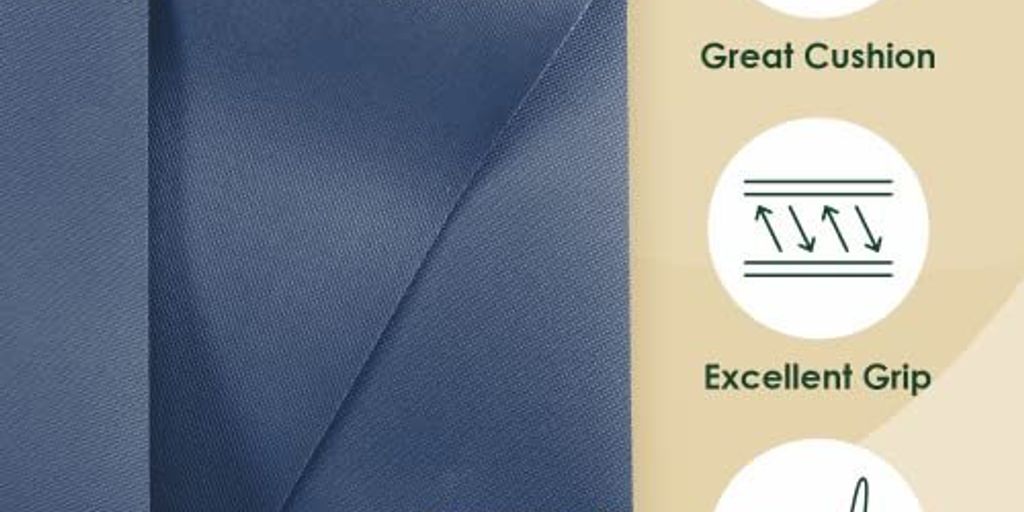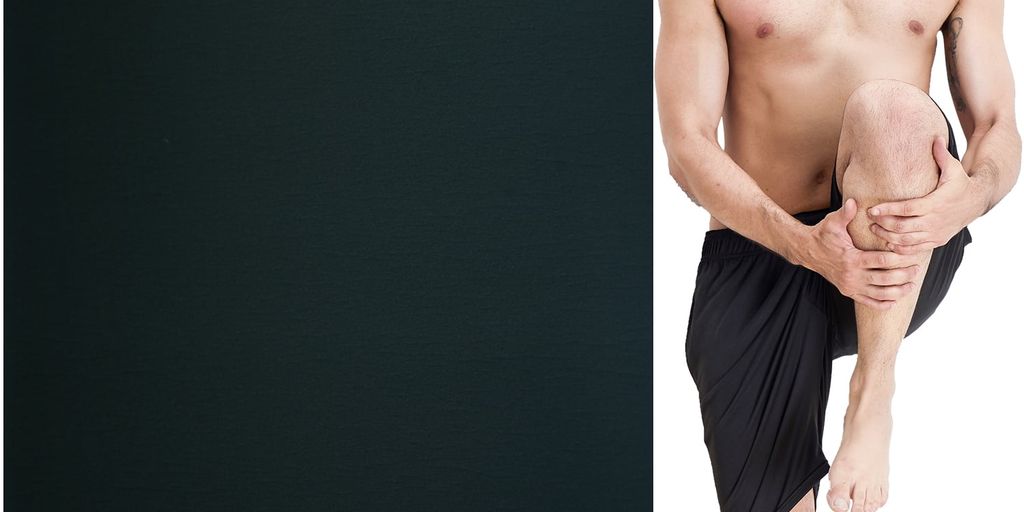
Finding the Best Thick Yoga Mat for Ultimate Comfort and Support
Choosing the right yoga mat is super important, especially if you want to stay comfy and supported during your practice. Thick yoga mats are great because they offer extra cushioning, which can help protect your joints and make your yoga session more enjoyable. In this article, we'll explore why thick yoga mats are a good choice, what features to look for, and review some of the best options out there. Let's dive in!
Key Takeaways
- Thick yoga mats provide extra cushioning, making your practice more comfortable.
- They help protect your joints, which is great for people with sensitive knees or wrists.
- Different materials like natural rubber, PVC, and TPE offer various benefits.
- Taking care of your mat properly will make it last longer and keep it in good shape.
- Choosing the right thickness depends on your yoga style and personal comfort preferences.
Why Choose a Thick Yoga Mat?
A thick yoga mat can make a big difference in your practice. It offers extra cushioning, which can be especially helpful for beginners or those with sensitive joints. Choosing the right thickness is important to find a balance between comfort and stability.
Benefits of Extra Cushioning
A thicker mat provides more padding, making it easier on your knees, elbows, and other pressure points. This can help you stay comfortable during longer sessions and reduce the risk of injury.
Ideal for Various Yoga Styles
Whether you practice Hatha, Vinyasa, or Restorative yoga, a thick mat can offer the support you need. It can also be great for Pilates or other floor exercises.
Enhanced Joint Protection
For those with joint issues or injuries, a thick mat can provide the extra support needed to practice safely. It helps in absorbing impact and reducing strain on your joints, making your practice more enjoyable and sustainable.
Key Features to Look for in a Thick Yoga Mat
Material Quality
When choosing a thick yoga mat, the material is crucial. High-quality materials ensure durability and comfort. Look for mats made from natural rubber, PVC, or TPE. These materials offer different benefits, so pick one that suits your needs.
Thickness and Density
The thickness and density of a yoga mat can greatly affect your practice. Thicker mats provide more cushioning, which is great for joint protection. However, they can be heavier and harder to transport. Consider your priorities when selecting the right thickness.
Grip and Texture
A good yoga mat should have excellent grip and texture to prevent slipping. This is especially important for styles like hot yoga, where you might sweat a lot. Mats with a textured surface can offer better traction, helping you maintain your poses safely.
Remember, the best yoga mat for you will depend on your personal preferences and the type of yoga you practice.
Top Materials for Thick Yoga Mats
Natural Rubber
Natural rubber is a popular choice for thick yoga mats. It offers excellent grip and is eco-friendly. This material is also durable, making it a great investment for long-term use. However, it can be heavier than other options, which might be a consideration for those who travel frequently with their mat.
PVC
PVC, or polyvinyl chloride, is another common material for yoga mats. PVC mats are known for their durability and affordability. They provide good cushioning and are easy to clean. On the downside, PVC is not as eco-friendly as other materials, which might be a concern for environmentally conscious yogis.
TPE
TPE, or thermoplastic elastomer, is a newer material in the yoga mat market. It combines the best features of rubber and plastic, offering a lightweight and eco-friendly option. TPE mats are also known for their excellent grip and comfort. They are a great choice for those looking for a balance between performance and sustainability.
When choosing a yoga mat, consider the material that best fits your needs and lifestyle. Whether it's the eco-friendliness of natural rubber, the affordability of PVC, or the balanced features of TPE, there's a perfect mat out there for everyone.
How to Care for Your Thick Yoga Mat
Cleaning Tips
To keep your thick yoga mat in top shape, regular cleaning is essential. Wipe it down after each use with a damp cloth to remove sweat and dirt. For a deeper clean, mix a solution of mild soap and water, then gently scrub the mat. Avoid using harsh chemicals as they can damage the material.
Storage Solutions
Proper storage can extend the life of your yoga mat. Roll it up loosely and store it in a cool, dry place. Avoid leaving it in direct sunlight or in a hot car, as extreme temperatures can cause the mat to break down. If you have limited space, consider a yoga mat bag or strap for easy storage and transport.
Maintaining Durability
To ensure your mat lasts, be mindful of where you use it. Avoid rough surfaces that can cause wear and tear. Rotate your mat regularly to prevent uneven wear. If you notice any damage, address it promptly to prevent further deterioration.
Taking good care of your thick yoga mat will not only extend its life but also enhance your practice by providing consistent comfort and support.
Reviews of the Best Thick Yoga Mats on the Market
Budget-Friendly Options
If you're looking for a thick yoga mat that won't break the bank, there are several great choices. These mats offer good cushioning and support without costing too much. One popular option is the BalanceFrom GoYoga mat, which is known for its durability and comfort. Another affordable choice is the Gaiam Essentials Thick Yoga Mat, which provides extra padding for your joints.
Premium Choices
For those willing to invest a bit more, premium thick yoga mats offer superior quality and features. The Manduka PRO Yoga Mat is a top pick, offering excellent density and support. Another high-end option is the Liforme Yoga Mat, which is praised for its grip and alignment guides. These mats are perfect for serious yogis who want the best.
Eco-Friendly Alternatives
If you care about the environment, there are eco-friendly thick yoga mats available. The Jade Yoga Mat is made from natural rubber and is both comfortable and sustainable. Another great eco-friendly option is the prAna E.C.O. Yoga Mat, which is made from non-toxic materials. These mats are perfect for those who want to practice yoga while being kind to the planet.
Finding the right yoga mat can make a big difference in your practice. Consider thin mats for portability, thick mats for cushioning, and medium thickness for versatility in yoga practice.
How to Choose the Right Thickness for Your Needs
Understanding Different Thickness Levels
Choosing the right thickness for your yoga mat can make a big difference in your practice. Mats usually range from 1/16 inch to 1/4 inch thick. Thicker mats offer more cushioning, which is great for poses that put pressure on your joints. Thinner mats, on the other hand, provide better stability for standing poses.
Matching Thickness to Yoga Style
Different yoga styles may require different mat thicknesses. For example:
- Hatha Yoga: A medium-thickness mat (around 1/8 inch) works well.
- Vinyasa or Ashtanga Yoga: A thinner mat (1/16 inch) is ideal for better grip and balance.
- Restorative or Yin Yoga: A thicker mat (1/4 inch) offers extra comfort and support.
Personal Comfort Preferences
Your comfort is key when choosing a mat. Some people prefer a softer, thicker mat for extra cushioning, while others like a firmer, thinner mat for better connection to the floor. Try different thicknesses to see what feels best for you.
Remember, the best mat for you is the one that meets your needs and makes your practice enjoyable.
Choosing the right thickness for your yoga mat can make a big difference in your practice. Whether you need extra cushioning for your joints or a thinner mat for better balance, we've got you covered. Visit our website to explore our wide range of yoga mats and find the perfect one for you.
Conclusion
Finding the best thick yoga mat can make a big difference in your practice. A good mat provides the comfort and support you need to focus on your poses without worrying about slipping or feeling the hard floor. When choosing a mat, think about the material, thickness, and texture that will work best for you. Remember, the right mat can help you enjoy yoga more and keep you coming back to the mat. So take your time, do your research, and pick a mat that feels just right for you.
Frequently Asked Questions
Why should I choose a thick yoga mat?
A thick yoga mat provides extra cushioning, making it more comfortable for your joints and ideal for various yoga styles.
What thickness is best for a yoga mat?
The best thickness depends on your needs. Generally, mats between 6mm to 12mm are good for most people.
How do I clean a thick yoga mat?
You can clean your mat by wiping it down with a mixture of water and mild soap. Make sure to let it air dry completely.
Is a thicker yoga mat better for joint protection?
Yes, a thicker mat offers better support and protection for your joints, which can help prevent injuries.
What materials are best for thick yoga mats?
Natural rubber, PVC, and TPE are popular materials for thick yoga mats. Each has its own benefits.
Can I use a thick yoga mat for other exercises?
Yes, thick yoga mats can be used for other exercises like Pilates or stretching, offering extra comfort and support.

